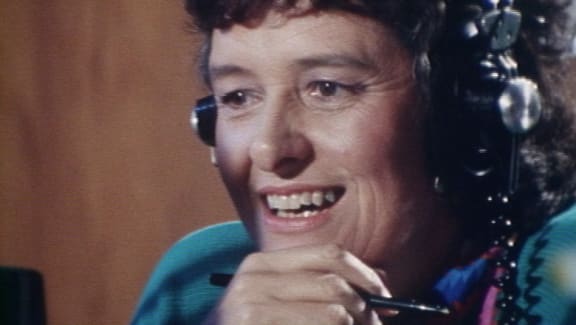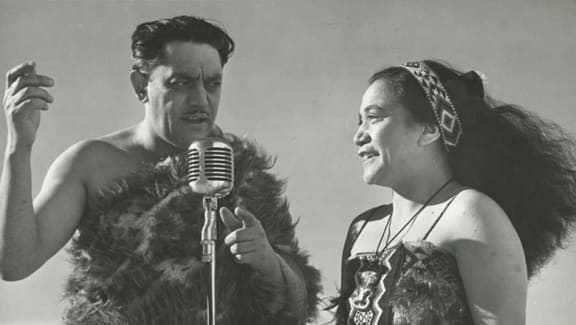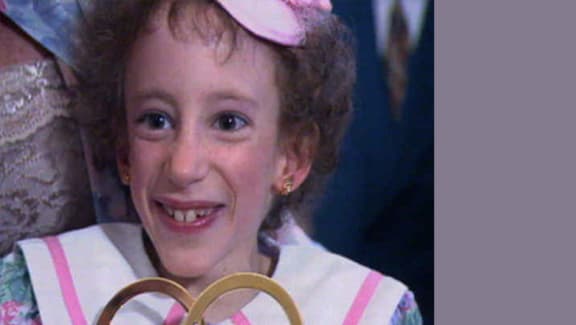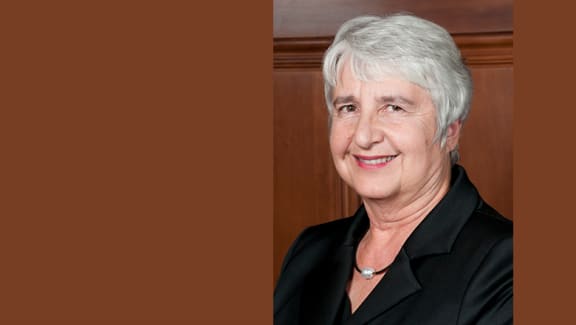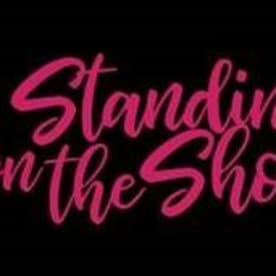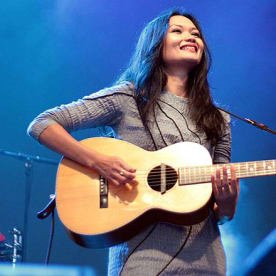Last September to mark 125 years of women’s suffrage in New Zealand, Ngā Taonga Sound & Vision started a project to curate a permanent online exhibition of 125 influential local women - Standing on the Shoulders
They used archived film, radio and television recordings from Ngā Taonga’s archives.
Next week, the final entries in this project will go online on 8 March which is International Women’s Day.
Sarah Johnston from the Sound Archives Ngā Taonga has been involved in creating the exhibition.
“We tried to get a really broad sweep of New Zealand women – from figures born in the 19th century through to millennials,” Sarah says.
In 1997 a 21-year-old Bic Runga was interviewed on the eve of the release of her first album, Drive, by John Campbell on RNZ.
Despite her cheerful demeanour and constant smile, Campbell observed Runga’s music was far from “Haircut 100”.
“I’m not good with happy music, I don’t really listen to a lot of happy music and I certainly can’t write it, and I think the song-writing comes from the darker side of me that I don’t go around showing to people, I’m writing songs when I’m that person, I’m at home.
“I think love’s pretty much the same for everyone, it’s often a feeling of like, well sickness, and that’s why people identify with love songs, because we all know what it’s like, we all know it’s pretty much the same thing. “
Runga said she was excited about the upcoming release of Drive.
“I‘ve worked in music retail for years and years, and I’ve been selling other people’s music for years and years and to have my own record out, nothing else compares to it. It’s just so cool, yeah.”
International Women’s Day is a significant date for another trailblazing New Zealand woman.
The first female Chief Justice of New Zealand, Dame Sian Elias will retire on that day, after 20 years in the role.
She was interviewed in 1996 by Brian Edwards on RNZ about the moment when she first realised that law was not a typical career for a young woman in the mid-1960s.
“I didn’t really realise how unusual it was until I enrolled and as I queued up to enrol at Auckland Law School somebody I knew from dancing class came up and said: ‘What on earth are you doing enrolling for law?’
“I was rather surprised I suppose, I shrunk a little, but there were about six of us who started in 1966 that was the biggest intake they’d had at Auckland Law School, one of the others was Margaret Wilson who was one of the first woman professors, and it was quite hard to begin with, we certainly stood out, we were freaks I think and some of the lecturers had some difficulty coping with us.
“I do remember one of the professors bailing me up and suggesting that perhaps I was enjoying it all because there were so many more men in it than women.
“For someone who had never known any boys, it was a bit of a shock.”
One very influential person in the exhibition never made it to womanhood.
She tragically died at the age of 11. This was Eve van Grafhorst, who in the 1980s became the face of the AIDS epidemic in this country.
She was born in Australia and as a premature baby, contracted HIV via a blood transfusion.
It’s hard to remember now there was so much hysteria around this new epidemic, her family were forced to leave their home in rural NSW and they moved to New Zealand.
Her case drew massive media attention throughout her life and she spread awareness about AIDS and the prejudice it brought.
In a news report from Morning Report in 1986 about Eve’s first day at school in Hastings, her mother Gloria says Eve had been welcomed to her new community.
“She’s living like a normal little girl, which is really all we were fighting for and just everybody accepts her, there’s no ‘don’t touch me’ type of attitude or anything like that, it’s completely different, they want her to play with their children. You can go visiting and people just don’t care, that’s it - it’s wonderful.”
Sadly the anti-retroviral drugs which now mean HIV-positive people can live pretty normal lives, weren’t available then and Eve died from AIDs-related illness in 1993.
The exhibition also includes TV footage of Dame Alison Holst, the original first lady of New Zealand TV cooking and Rangitiaria Dennan (aka Guide Rangi) who guided tourists in Rotorua for over 40 years in an interview from 1966 where she demonstrated how to make piupiu out of harakeke leaves.
Also included are Dame Ngaio Marsh talking about crime novels, Prime Ministers Helen Clark and Jenny Shipley, stuntwoman Zoe Bell and Ana Hato – also from Rotorua and one of New Zealand’s first recorded music superstars.
Hato and her cousin Deane Waretini were recorded singing in 1927 in Rotorua – the first locally recorded artists – and the waiata they sang sold in their thousands for many decades.
Her 1941 she was invited to sing live on air at the opening of the new station 1ZB building in Auckland. She sang ‘Whisper of Heaven – Akoako o te Rangi’
